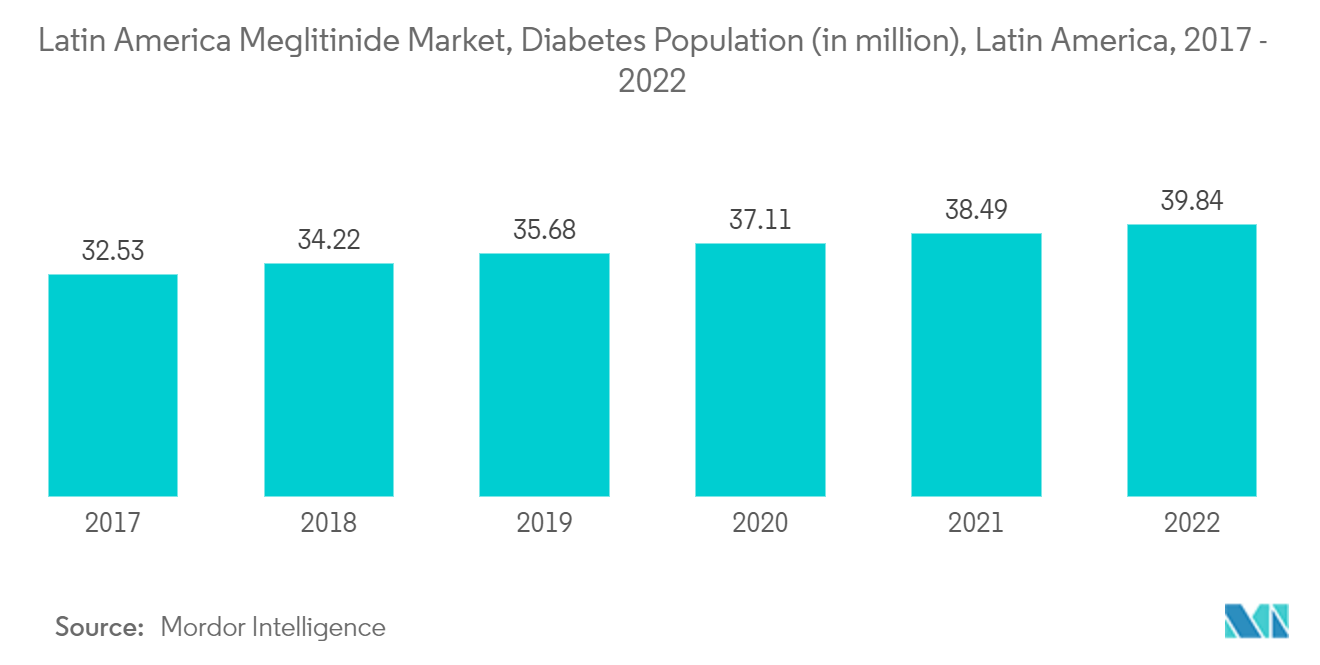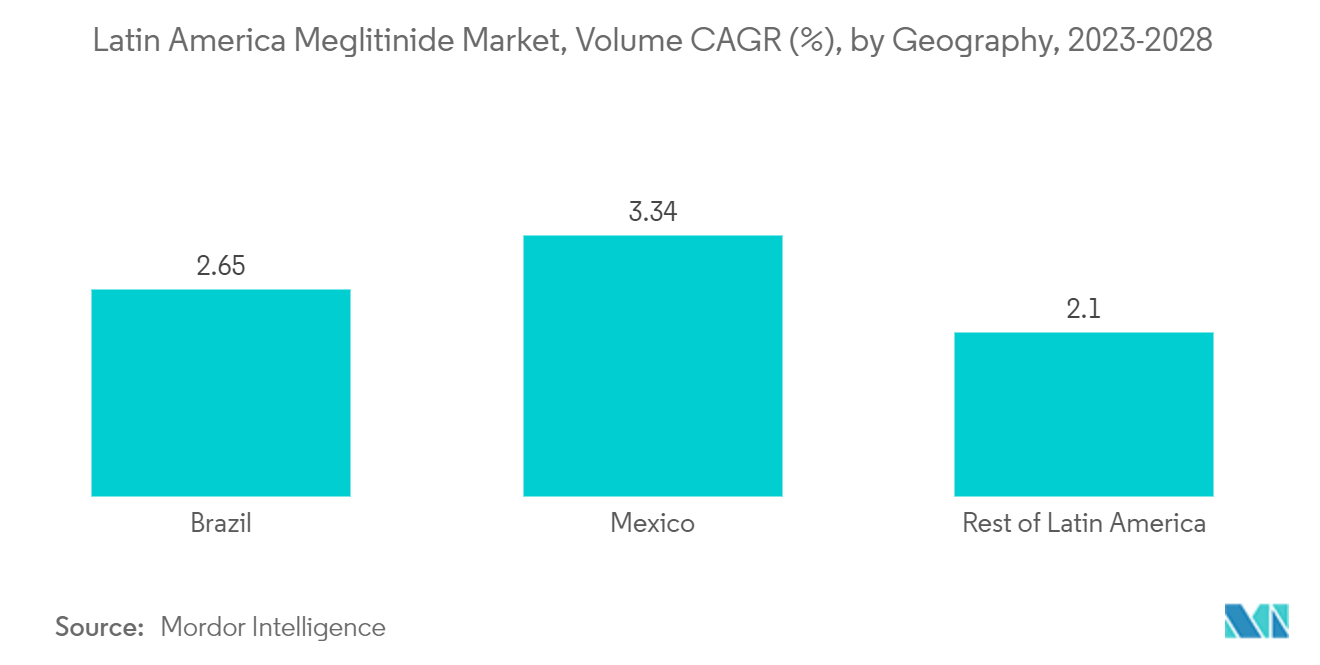Market Trends of Latin America Meglitinide Industry
Rising Diabetes Prevalence in Latin America Region
In Latin America, the incidence of type 1 diabetes ranges from 0.4 to 8.3 cases per 100,000 children under the age of 15, and the prevalence of type 2 diabetes ranges from 1.2% to 8%, with higher prevalence rates in urban areas. Diabetes is expected to increase by 38% in Latin America over the next decade, compared to a 14% increase in the population. By 2025, the total number of diabetes cases is expected to more than double and surpass the number of cases in the United States, Canada, and Europe.
Factors contributing to this increase include population aging and increased life expectancy, urbanization, and lifestyle changes among Native American populations. Diabetes treatment is available to only a minority of people in many places. Furthermore, type 2 diabetes is frequently diagnosed late in the disease's progression, resulting in 10-40% of patients having chronic complications at the time of diagnosis. Hospital costs account for most direct treatment costs, and diabetes mortality has increased significantly in some areas over the last two decades.
Therefore, owing to the factors above, the growth of the studied market is anticipated in the Latin America Region.

Mexico is Expected to Dominate the Latin America Meglitinides Market over the forecast period
Among the Latin American countries, Mexico dominates around 93% of the total Latin America Meglitinide Market in the current year. This is mainly due to the high diabetes prevalence in the country. In Mexico, the Mexican health system is managed by each state and local health secretariat and is governed by the MOH. Furthermore, in many towns where the public sector cannot meet people's requirements, partnerships with private organizations have been put in place to increase access to PHC. The Mexico health system in Mexico provides coverage to medicines through several programs that include a 20% expanded access to essential medicines. Brazil offers an extensive free immunization program. Mexico faced numerous lawsuits over the last 20 years, demanding the coverage of high-cost drugs to treat diabetes and certain rare or low-prevalence diseases.
According to Universal Health Coverage 2022, The four nations, including Argentina, Brazil, Colombia, and Mexico, achieved an overall index of essential coverage of 76-77 percent, with households spending less than 25 percent of their income on health care and expanding access to primary healthcare systems and coverage for noncommunicable illnesses enhanced service coverage, while a rise in the number of qualified healthcare personnel enabled community outreach.
Meglitinides, for example, bind to the sulfonylurea receptor in beta cells (pancreatic insulin-producing cells) but at a different site than sulfonylureas. Meglitinides' interaction with the receptor is not as "tight" as sulfonylureas, resulting in a much shorter duration of action and a higher blood glucose level required before the drugs produce pancreatic insulin secretion. Currently, two meglitinides are available in the United States: repaglinide (Prandin) and nateglinide (Starlix). Both are approved for use in type 2 diabetes patients alone and combination with other oral diabetes medications. The main effect of meglitinides is to lower after-meal blood glucose levels, which results in a lower HbA1c (an indicator of blood glucose control over the previous 2-3 months).
The market is expected to grow during the forecast period due to the factors above.


